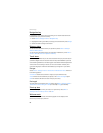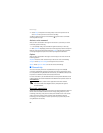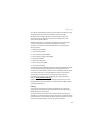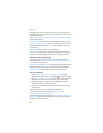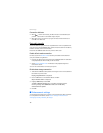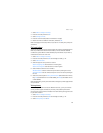
Settings
67
Since devices with Bluetooth connectivity communicate using radio waves, your
phone and the other device do not need to be in direct line-of-sight.
The two devices only need to be within 10 meters (30 feet) of each other.
The connection can be subject to interference from obstructions such as
walls or other electronic devices.
Whether used actively or in the background, Bluetooth wireless technology
consumes the battery and reduces the operating time of the phone.
This device is compliant with Bluetooth Specification 1.2 and supports the
following profiles:
• Object push profile (OPP)
• File transfer profile (FTP)
• Dial-up networking profile (DUN)
• Generic object exchange profile (GOEP)
• Headset profile (HSP)
• Hands-free profile (HFP)
• Generic access profile (GAP)
• Serial port profile (SPP)
To ensure interoperability between other devices supporting Bluetooth technology,
use only enhancements approved by Nokia for this model. Check with the
manufacturers of other devices to determine their compatibility with this device.
There may be restrictions on using Bluetooth technology in some locations.
Check with your local authorities or service provider. If you want more
information on this function, visit the Bluetooth Technology organization
Web site: https://www.bluetooth.org/
.
Features using Bluetooth technology, or allowing such features to run in the
background while using other features, increase the demand on battery power
and reduce the battery life.
Pairing
You can set up a permanent association (pairing) between your phone and
another device with Bluetooth technology. Some devices may require pairing
before data transfer can take place.
To pair with a device, you and the owner of the other device must agree on a
passcode of 1–16 numeric characters. The first time you try to connect the devices,
you must each enter the same passcode. After the devices are paired, you do not
need to use the passcode again, so there is no need to remember it.








